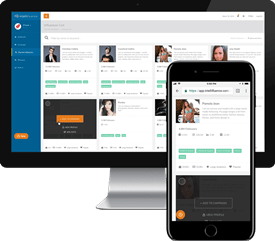Influencer marketing has evolved from a niche digital tactic to a strategic cornerstone in modern advertising. But is influencer marketing effective in 2025? The answer: emphatically yes. With unparalleled engagement, genuine connections, and measurable returns, brands are discovering that influencer marketing effectiveness often surpasses traditional methods. Here’s why it’s working and how your brand can harness its power.
Why is influencer marketing effective?
- Authenticity & social proof
Influencers speak with trusted, personal voices akin to recommendations from friends. Studies show 69% of consumers trust influencers, friends, and family more than brand messages. For Gen Z and Millennials, this trust translates directly into purchasing decisions: over 53% say they’d consider buying products endorsed by influencers.
- High engagement rates
Engagement is where influencers shine. Micro- and nano-influencers (10K followers or fewer) boast an average 2–2.19% engagement rate, thus far exceeding the 1–2% average of traditional brand posts. On TikTok, smaller creators see 15% engagement, dwarfing Instagram’s 2% and YouTube’s 3.5%. On the Intellifluence platform, brands can view an influencer’s engagement rate for Instagram, YouTube, and TikTok by simply hovering over the relevant social media icon on the influencer’s profile page.
- Impressive ROI
Influencer campaigns aren’t just feel-good; they deliver results. Brands earn an average $6.50 for every $1 spent, with some seeing returns of $20+. On Instagram specifically, advertisers report $4.12 in revenue per $1 invested. And 84% of marketers now view influencer marketing as effective.
- Explosive industry growth
The global influencer marketing industry has exploded from $1.7 billion in 2016 to an estimated $24 billion at the end of 2024, projected to reach $32.5 billion by the end of 2025. That 35% year-over-year growth outpaces nearly every traditional channel.
Real-World Success: Brands Leading the Way
- Samsung handed out gold flip phones to 17,000 Paris Olympic athletes, not just gifting phones, but strategically turning recipients into ambassadors. The campaign drove a 23% sales increase.
- Financial firms, such as Invesco and BlackRock, have embraced “finfluencers” with 80% of U.S. companies now using influencers and seeing a median ROI of 160%.
- Brands like Spotify, Netflix, Adidas, and Rihanna’s Fenty Hair and Beyoncé’s Cécred dominate across platforms through consistent influencer-generated content, boosting earned media value.
How Brands Can Boost Revenue & Exposure
- Shifting budget allocation
A growing number of brands now dedicate significant portions of their marketing budget to influencers: 26% of agencies allocate 40%+, and 22% allocate 10–20% . Moreover, 85% of marketers have dedicated influencer budgets.
- Analytical sophistication
Marketers track campaigns more effectively than ever: 80% track sales, using methods like referral links, coupon codes, SKUs, and email captures. Data-driven metrics like ROAS, CPA, engagement quality, and multi-touch attribution help optimize investments. Leading platforms even integrate AI to help brands select the right talent and measure impact in real time.
- Micro- & nano-influencer focus
Rather than chasing mega-celebrities, brands are partnering with more micro- and nano-influencers—57% of campaigns involve e‑commerce stores, and 33% more micro-influencers are engaged each year. These creators deliver niche authenticity, higher engagement, and leaner budgets.
- Emphasis on authenticity & long-term relations
Marketing leaders at Cannes Lions stressed the importance of genuine alignment and niche authenticity. Research shows long-term partnerships result in 63% of brands working with the same influencers year after year.

Featured Influencer: Zack Uribarri
Hi! My name is Zack and I am from London. I love most sports (mainly football) and I am super into fitness myself, regularly going to the gym and going on long hikes and runs. I love travelling too, and my dream would be to travel all over the world, seeing new cultures and places. I have a little Jack Russell who is the love of my life called Zola, so I love dogs and pets in general. In terms of jobs, there isn’t much I would say no to.
5 Steps to Get Started (All Brand Sizes)
- Define clear goals (sales, awareness, UGC, follower growth): This ensures ROI alignment from day one.
- Choose influencer tier based on budget and goals: Select micro/nano for niche engagement, macro for scale. Brands using Intellifluence can quickly find and select influencers based on follower count, budget, engagement, social media channels, location, and more by refining our influencer database with the Intellifluence advanced filters tool.
- Vet for authenticity: By auditing engagement and checking for fake followers, this will prevent wasted spend on fraudulent accounts.
- Launch test campaigns: Test with a minimum of 2, but no more than 5 creators. Use unique tracking links or codes to measure performance, as small pilot campaigns are ideal for benchmarking ROI
- Scale smartly: Double down on high-performing creators, refine messaging, and repurpose content, as 63% of brands reuse influencers.
Tips for Brands by Size
- Small businesses/startups: Work with nano-influencers (1K–5K followers) as they’re affordable, authentic, and deliver a 2.19% engagement rate. Use free merchandise or small commissions to launch campaigns.
- Mid-size brands: Mix micro-influencers (10K–100K) for niche markets and macro-influencers (100K–1M) for broader reach. Emphasize content reuse for ads (22% of micro-influencer goals include this).
- Enterprises: Pool resources for strategic macro and celebrity influencer drives, combine with micro-influencer “long-tail” efforts, and integrate via artificial intelligence, thus mirroring Publicis’s acquisition of Captiv8 to manage 15 million creators.
Overcoming Challenges
- Authenticity vs. scale: Favor micro-creators for genuine voice and trust—mega influencers can cost $5K–$10K per Instagram post .
- FTC compliance: Always require disclosure of sponsored content. Missteps can damage reputation.
- Measuring ROI: Use referral links and coupon codes to track attribution—from 23% track clicks, 22% track directly from sales.
- Influencer burnout: Nearly half of influencers face burnout. Build long-term, supportive relationships.
Yes—is influencer marketing effective in 2025? Absolutely. With trust-driven authenticity, high engagement, and data-backed ROI, influencer campaigns outperform traditional channels in many key metrics. The industry’s blistering growth—from $24B to $32B projected this year—signals its staying power.
By aligning spending with clear goals, choosing creators wisely, and scaling thoughtfully, brands large and small can tap into influencer narratives to amplify reach, fuel revenue, and build long-lasting consumer trust—making influencer marketing not just effective, but essential in today’s marketing mix.

SallyBot is committed to helping users get the most out of Intellifluence. By helping brands create campaigns, providing unparalleled customer service and offering useful advice, nothing makes SallyBot happier than hearing she is liked… Really, really liked.






